As of April 7, 2020 the State of Michigan reported that the State has identified 18,790 COVID-19 confirmed cases, which equates to 190 cases per 100,000 in the State of Michigan. Confirmed cases in the State and throughout the counties in Southeastern Michigan have continued to rise since mid-March. As the third chart below shows, the City of Detroit and Wayne, Oakland and Macomb counties have experienced the largest number of increases in case numbers in the region. The Wayne County numbers in the chart exclude the number of cases in Detroit. Since March 16 the City of Detroit has had the highest number of confirmed cases in the region. On April 7 the State of Michigan reported there were 5,476 confirmed cases in the City of Detroit. On April 7 Oakland County reported 3,736 confirmed COVID-19 cases, Wayne County reported 3,569 (excluding Detroit) and Macomb County reported 2,414. As these three counties and the City of Detroit continue to experience increases in case numbers, the less populated counties in the region-Monroe, Livingston, St. Clair-have had case numbers increasing at a much slower rate. On April 7 none of those counties had more than 155 confirmed cases. This data was provided from covidtracking.com, which links to the data published daily from the State of Michigan.
In addition to the raw data of confirmed cases, we also show in the fourth chart the percent change in the number of cases reported day-to-day. The largest percent change thus far reported was on March 19 at 320 percent-this increase was also likely related to an increase in the number of available tests. Also the 0 percent change on March 28 reflects that the data reported from the day prior did not change; it is unlikely that no new cases were reported that day. On April 7 the percent change from April 6 was 16.3 percent, an increase from the day prior which had seen 9.6 percent increase.
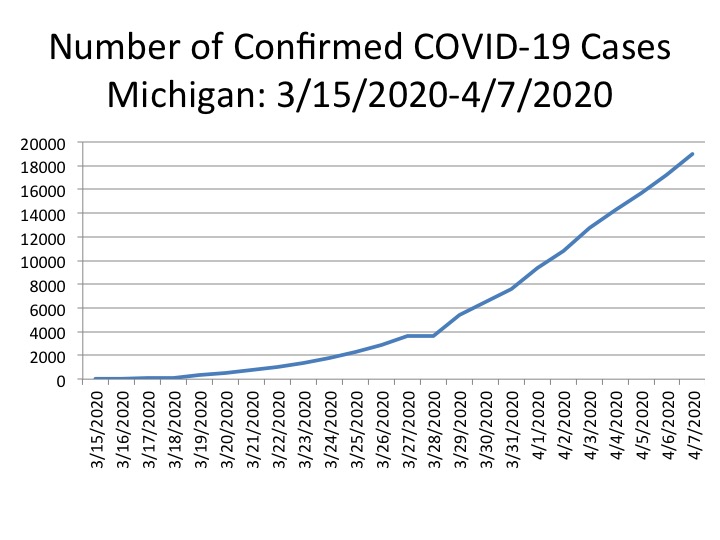
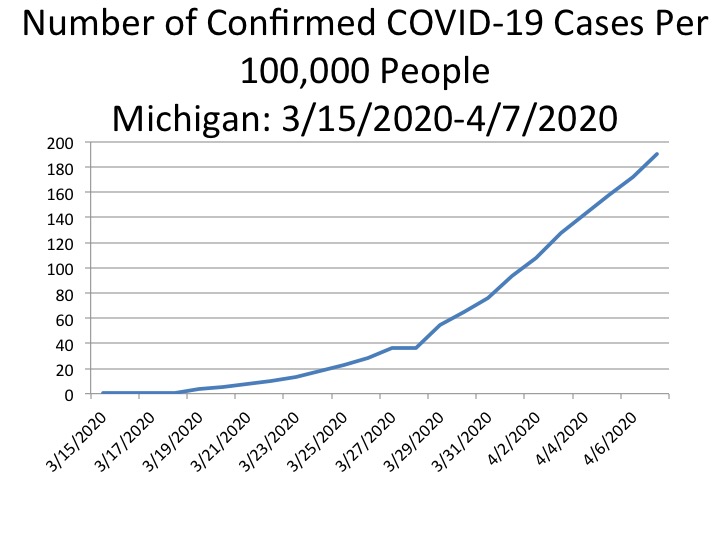
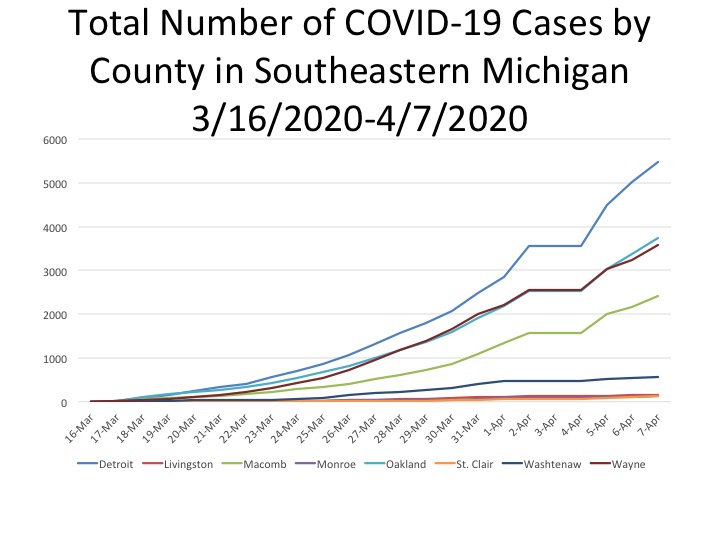
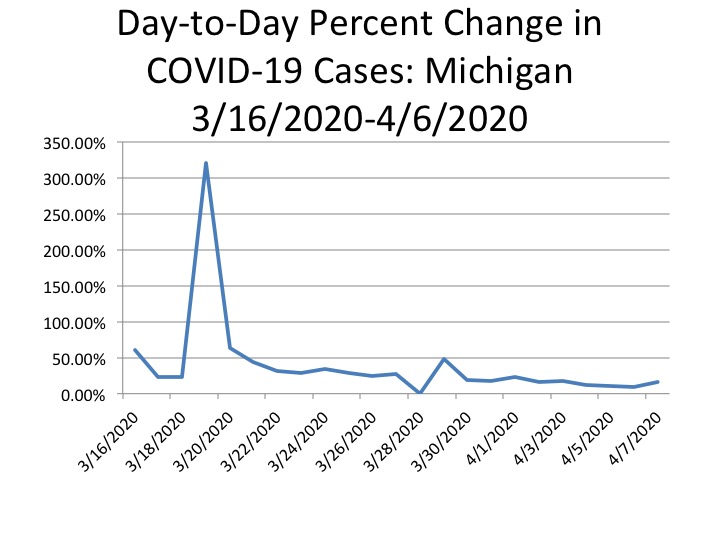
The total number of deaths in the State of Michigan also continues to rise. It was reported by the State of Michigan that on April 7 the total of COVID-19 deaths reached 845. This was a percent change of 16.2 percent from April 6, a slight decrease from the 17.8 percent change from April 5 to April 6.
The 845 total deaths reported for April 7 was 118 deaths higher than what was reported on April 6. The second and third charts below tend to indicate some slowing in the increase of deaths. The fourth chart below demonstrates that Oakland County and Detroit have been changing places as the locations with the highest number of deaths. As of April 7 Detroit had the highest number; on April 7 the State reported there were 222 total COVID-19 deaths in Detroit. Also on April 7 it was reported that were 205 reported COVID-19 deaths in Oakland County, 180 in Wayne County (excluding Detroit) and 121 in Macomb County. There have been zero reported deaths in Monroe County, 2 in Livingston County, 3 in St. Clair County and 11 in Washtenaw County.
**Note-the 0 percent change on March 28 reflects that the data reported from the day prior did not change; it is unlikely that no new cases were reported that day.**
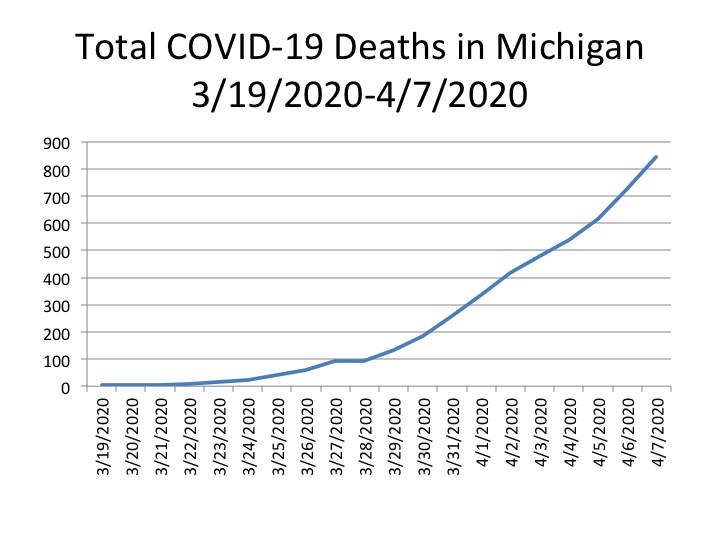
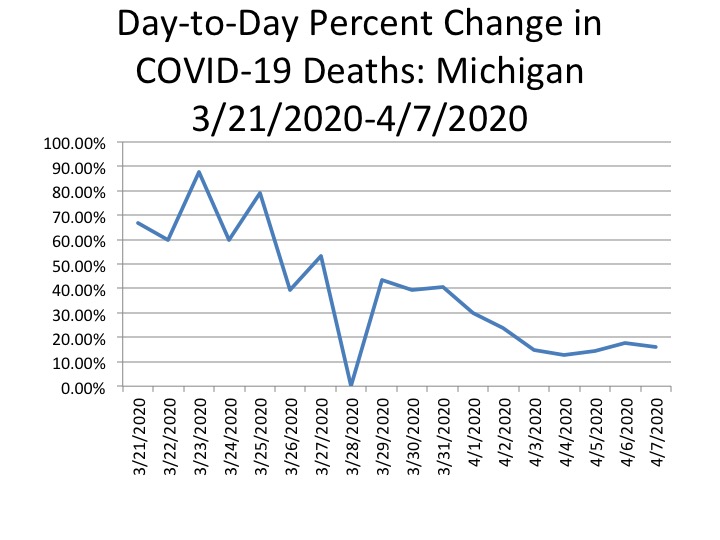


This post highlights what has been expected, the number of cases and deaths continue to rise. As we have been noting though, availability of tests and resources does play a part in the numbers publicly reported for both confirmed cases and the number of deaths. As we continue to update numbers you will also see us dig further into the County data to better understand when and where the main increases in cases and deaths are occurring.




